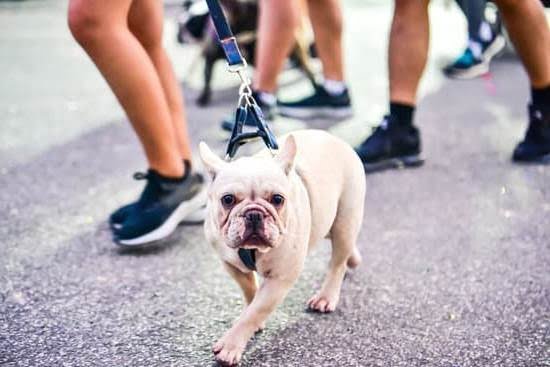Introduction
One of the most important benefits to training a dog to be around chickens is that it helps keep the chickens safe from any potential harm. Not only that, but when a dog is properly trained to be around chickens, it can also provide companionship and warmth for the chickens by helping them feel more secure in their environment. Additionally, having a well-behaved and trained dog around your chickens ensures that your dogs won’t get into any fights with other animals or cause any harm to unsuspecting passersby. By teaching your dog proper behavior around chickens, you guarantee that they will form a bond rather than cause chaos in the backyard.
Training Process:
In order to properly train a dog to be around chickens, you need to first teach the basic commands of sit, stay and come. It’s important that these commands are known before taking an opportunity to place your dog around your chickens. The next step would be introducing your pet carefully and calmly into spaces where the hens roam; a good way of doing this would be through rewards like treats or verbal praise every time they remain calm while near them. You should also try redirecting their attention away from the birds if they become overly interested or excited by using their favorite toy or something else they find rewarding. Finally, consistent practice is key; frequent walks together or brief visits together can help build up trust and create positive associations between Fido and his feathered friends!
Selecting the Right Dog Breed for Interacting with Chickens
When training a dog to be around chickens, it is important to select the right breed for the job. Certain breeds have characteristics that make them better suited for interacting with poultry. For example, herding and working dogs such as collies and Shetland Sheepdogs naturally have strong herding instincts and are known to be very patient and gentle with animals, making them an ideal choice. Similarly, hounds such as Beagles, Greyhounds, and Foxhounds have been bred to track scent and also require patience when dealing with smaller animals like chickens.
Once you’ve selected your desired breed of dog, it’s important to remember to take a low-stress approach when training your pet around chickens. Start in a neutral environment that has no association with chickens for the first few sessions. Slowly introduce your dog to different types of poultry in short snippets over time, gradually increasing their exposure until they can recognize them safely. By rewarding calm behavior with treats or verbal praise, it will help reinforce positive interactions and greatly increase bonding between the dog and birds
Designing an Environment that is Safe for Both Animals
Training a dog to be around chickens can be a tricky process. While some dogs may already naturally get along with other animals like chickens, others may need some help from their owners in order to learn how to respond appropriately. It is important to create an environment for both animals that allows them to be safe, secure, and comfortable.
To begin the training process, start by associating positive words, such as ‘good’ or ‘praise’, with being near chickens. Reward your dog with treats or verbal praise every time they stay calm and show good behaviour whenever they come into contact with chickens. Short sessions that last from 1-2 minutes at a time should be enough time for your dog while they are still getting used to being around chickens. Once your pup has had chance to get used to the chickens you will likely need more reinforcement in the form of regular rewards and plenty of patience as you progress further into training.
It is essential to always use positive reinforcement when training any animal and teaching them how to behave around other animals like chickens is no different! Create boundaries for the two animals and provide plenty of clear instructions so that neither animal gets overwhelmed or confused about what is expected of them. This will also assist in helping your dog learn quickly and build trust between the two species.
Gradually Introducing the Dog to the Chickens
When training a dog to be around chickens, it is important to start with the basics and gradually introduce the dog to the chickens. Start by teaching the dog basic obedience and commands such as sit, stay, and come when called. This creates a bond of trust between the dog and you, allowing them to understand that you are in charge and that they need to listen. After basic obedience has been established, slowly introduce your dog to the chickens, separating them by way of a fence or crate if necessary. Rewards should be given for any positive behaviors towards the chickens. Once your pup is comfortable with being around free-range chickens, more formalized training rules can be established such as no chasing or barking. It can take weeks or even months for a pup to learn how to cohabitate safely with chickens, but with patience and proper training they can become great companions.
Ensuring Each Animal is Getting an Adequate Diet
Training a dog to be around chickens is an important step in making sure both animals are safe, comfortable, and happy. It’s essential to ensure that each animal is getting an adequate diet so they are healthy enough to properly interact with one another. To start the training process, introduce the chickens and dog while they are still separated. This helps prevent any potential violence or accidents from occurring. During this time, give the dog plenty of exercise and rewards for good behavior such as fetching a stick or obeying commands such as “sit” and “stay”. Once the animals seem comfortable being close to one another, begin allowing supervised interactions between them with extra treats for positive behaviors such as ignoring the chickens or calmly sniffing them. Make sure these meetings occur in an enclosed area where neither can get hurt if things become too intense. Gradually increase the length and amount of interactions until the two are familiar and comfortable with one another’s presence. By continuing to reward positive behavior (such as not barking or chasing after the chickens) with treats, affection, games of fetch, etc., you’ll make sure your pup learns how to act around other animals and maintain a safe environment for everyone involved!
Training Your Dog to Resist Chasing the Chickens
When training your dog to resist chasing the chickens it is important to remember that they are only animals and do not understand human commands naturally. Therefore you need to take steps in order to ensure that the dog will not harm the chickens. A good place to start is by making sure that the dog wears a head collar as soon as possible and that he is obedience trained so he understands commands such as ‘leave’ or ‘no’. Additionally, establishing boundaries between the chickens and the area where the dog can freely roam should be done prior to introducing your pet. Also, introducing your pet slowly to the environment while reinforcing positive behaviors will help immensely in avoiding incidents of chasing. To do this, consider putting the chickens on a higher perch so they are out of reach from a nipping pup, use lemon scented sprays for additional deterrents to biting, and make sure all members of the family give equal attention when introducing them first together. Finally, if there is any naughty behavior always intervene immediately with a firm but gentle admonishment and then reward desired behaviors with treats and lots of praise.
Teaching the Chickens to Recognize Your Dog as a Friend
When training a dog to be around chickens, it is important to first teach the chickens to recognize your dog as a friend. Introducing the dog to them slowly and calmly is key. When they are around the chickens, give your dog lots of treats and praise so they can associate being near the chickens with good things. Make sure that the first few times they are around the birds, you don’t leave them alone together. If your dog becomes too excited or scared, it will create a negative association with the chickens which could make it more difficult for them in future interactions. Offer additional treats to encourage calm behavior.
Practice Makes Perfect
Once your chicken and dog are comfortable enough being around each other, you need to start practicing putting them together in enclosed spaces without supervision. This could be done in a large cage or coop where both animals have plenty of room for movement but cannot escape. It is here that you can really begin testing how well your pooch will behave around their poultry pals. As always, reward them with treats if they stay calm and avoid disturbing the birds too much. Over time, the two animals should form a bond and eventually become comfortable enough being in close proximity with each other even outside of an enclosed space.
Reinforcing Good Behaviors for Both Animals
When training a dog to be around chickens, it’s important to safely introduce the two and reinforce good behaviors for both animals. When first introducing them, make sure they are kept in separate areas and that the chicken’s area of confinement is escape proof. Begin by taking your dog into the presence of the chickens on a leash and provide positive reinforcement such as using verbal rewards (e.g. “good boy/girl!”) each time he behaves calmly or shows interest without trying to go after or chase them. If your dog shows any aggressive behavior, take him away from the chickens immediately and correct him with a stern voice without yelling or physical punishment.
Once your dog is trained to behave calmly near chickens, you can slowly begin desensitizing his exposure by giving him treats when he is near them but urges him not to interact with them by teaching basic commands such as ‘leave it’ and ‘sit’. For added safety, consider installing an electric fence barrier around chicken coop area so that the chickens can roam freely while containing your dog in its own safe area where it will have access to food, water and playtime away from the birds. Regularly reinforcing these behaviors on walks and supervised field trips will help establish good habits ensuring both animals get along cooperatively over time.
Troubleshooting Unfavorable Behaviors
When attempting to train a dog to be around chickens, it is important to bear in mind that the process may take some time, particularly if the dog has had no prior contact with chickens. Allowing the dog and chickens to gradually become accustomed to each other is key; introducing them too quickly or in an aggressive way could cause fear and result in unfavorable behaviors. Additionally, if an unfavorable behavior arises, it is important to address it immediately.
The first step of this training should always be done without having the dog and chicken together in the same space. Start in an area where your dog feels comfortable (their home) and give them bites of food as a reward for following commands such as ‘sit’ and ‘stay’. Once they have a positive association with these commands, you can begin using them when the birds are in view. Have your dog focus on their food instead of on the chickens by giving them treats intermittently throughout their introduction period. The goal should be to keep their interest on the food and teach them that being around chickens is linked with something positive – treats!
If unwanted behaviors arise while trying this technique, such as barking or chasing after the birds, you must pause the process and adjust accordingly. Make sure to provide plenty of breaks during which your pet can relax away from the birds’ sight; dogs will develop negative associations if pushed too hard during training. Praise good behavior when it is shown instead of punishing bad; rewarding pleasant behavior promotes better results than reprimanding inappropriate behavior.
Rewarding Your Dog and Chickens for Good Behavior
Training a dog to be around chickens is an important task. It is essential to ensure that your dog can safely and happily coexist with chickens, while also protecting them from potential harm. The best way to do this is by rewarding your dog and chickens for good behavior whenever it occurs.
For instance, when the chickens are in their enclosure or run and your pup approaches politely, calmly, and cautiously, offer verbal praise or a treat for being kind. You might even take the opportunity to give him or her a few minutes of supervised petting time in their presence – hello chin scratches!
Additionally, throughout training you need to provide consistent leadership by creating boundaries. If you don’t want your pup to interact with the birds beyond a certain point, use verbal commands like “leave it” or “sit” and offer treats if they comply.
An effective way to train both the chickens and your dog is through positive reinforcement. When you notice that your pup interacts well with the animals, reward them with snacks, toys, attention, and playtime outside of the chicken pen area. Also keep in mind that it takes time for any animal to learn new behaviors — especially if they are not familiar with one another— so patience is key!
What to Do If Training Fails to Produce Results
If the training is failing to produce any visible results, it is important first to determine if the dog is displaying fear or aggression. If the dog appears afraid, then providing non-threatening interactions with people when handling chickens can help alleviate its fear. Establish a routine where the dog and chickens are in close proximity with the goal of acclimating the pet to the presence of birds. Gradually increase exposure time so that the dog can relax and realize there is no need for alarm. Additionally, offer incentivizing treats whenever he/she interacts calmly with the chickens.
When dealing with aggression, it is essential to deny your pet access to chickens until it displays better behavior. Place your dog on a leash initially so you have full control over their movements, as this will help ensure that everybody remains safe should an altercation occur. Work on aggressively rewarding appropriate behaviors rather than punishing aggressive ones. Do not force direct contact between these two animals but instead work through behavior problems with positive reinforcement via treats, words of encouragement, distraction techniques and games such as fetching toys or playing football. Incorporate training sessions into your daily activities – reward your pet when they heed commands related to chicken interaction – so they become conditioned over time to listen closely while they’re in close proximity of them birds.
Conclusion
Training a dog to be around chickens is an important part of animal husbandry. By teaching the basic commands such as ‘Leave it,’ you can create an obedient pup who is respectful of your feathered family. Also, by using positive reinforcement and distraction-based training, you can further ensure that your canine companion will stay away from the chickens while they’re in their environment. The benefits of having a well-trained dog that is comfortable around chickens include reduced stress levels for the animals, minimized disturbances to the birds, and more opportunities for human-animal bonding. Additionally, investing in chicken fencing or tethering them when playing outside will add an extra layer of protection for both the birds and your canine buddy. By investing time in creating a safe and trusting relationship between chickens and dogs, you can enjoypeaceful coexistence on the farm or at home!

Welcome to the blog! I am a professional dog trainer and have been working with dogs for many years. In this blog, I will be discussing various topics related to dog training, including tips, tricks, and advice. I hope you find this information helpful and informative. Thanks for reading!





